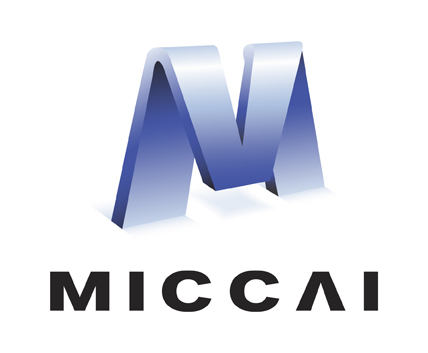Abstract
Human brain templates are a basis for comparison of brain features across individuals. They should ideally capture anatomical details at both coarse and fine scales to facilitate comparison at varying granularity. Brain template construction typically involves spatial normalization and image fusion. While significant efforts have been dedicated to improving brain templates with sophisticated spatial normalization algorithms, image fusion is typically carried out using intensity-based averaging, causing blurring of anatomical structures. Here, we present an image fusion method that exploits cortical surfaces as guidance to help preserve details in brain templates. Our method encodes cortical boundary information given by a cortical surface mesh in a signed distance function (SDF) map. We use the SDF map to help determine localized contributions of the individual images, especially at cortical boundaries, in image fusion. Experimental results demonstrate that our method significantly improves the preservation of fine gyral and sulcal details, resulting in detailed brain templates with good surface-volume agreement.
Access this chapter
Tax calculation will be finalised at checkout
Purchases are for personal use only
Similar content being viewed by others
Notes
- 1.
An image closest in appearance to all other images.
- 2.
References
Ahmad, S., et al.: Surface-constrained volumetric registration for the early developing brain. Med. Image Anal. 58, 101540 (2019). https://doi.org/10.1016/j.media.2019.101540
Andescavage, N., et al.: In vivo textural and morphometric analysis of placental development in healthy and growth-restricted pregnancies using magnetic resonance imaging. Pediatr. Res. 85, 974–981 (2019). https://doi.org/10.1038/s41390-019-0311-1
Avants, B.B., et al.: The optimal template effect in hippocampus studies of diseased populations. NeuroImage 49(3), 2457–2466 (2010). https://doi.org/10.1016/j.neuroimage.2009.09.062
De, K., Masilamani, V.: Image sharpness measure for blurred images in frequency domain. Procedia Eng. 64, 149–158 (2013). https://doi.org/10.1016/j.proeng.2013.09.086
Evans, A.C., et al.: Brain templates and atlases. Neuroimage 62(2), 911–922 (2012). https://doi.org/10.1016/j.neuroimage.2012.01.024
Fischl, B.: Freesurfer. NeuroImage 62(2), 774–781 (2012). https://doi.org/10.1016/j.neuroimage.2012.01.021
Glasser, M.F., et al.: The minimal preprocessing pipelines for the human connectome project. NeuroImage 80, 105–124 (2013). https://doi.org/10.1016/j.neuroimage.2013.04.127
He, C., et al.: Structure-function connectomics reveals aberrant developmental trajectory occurring at preadolescence in the autistic brain. Cereb. Cortex 30(9), 5028–5037 (2020). https://doi.org/10.1093/cercor/bhaa098
Herting, M.M., et al.: Development of subcortical volumes across adolescence in males and females: a multisample study of longitudinal changes. NeuroImage 172, 194–205 (2018). https://doi.org/10.1016/j.neuroimage.2018.01.020
Jenkinson, M., et al.: Improved optimization for the robust and accurate linear registration and motion correction of brain images. NeuroImage 17(2), 825–841 (2002). https://doi.org/10.1006/nimg.2002.1132
Jenkinson, M., et al.: FSL. NeuroImage 62(2), 782–790 (2012). https://doi.org/10.1016/j.neuroimage.2011.09.015
Kuklisova-Murgasova, M., et al.: A dynamic 4D probabilistic atlas of the developing brain. NeuroImage 54(4), 2750–2763 (2011). https://doi.org/10.1016/j.neuroimage.2010.10.019
Luo, Y., et al.: Intensity and sulci landmark combined brain atlas construction for Chinese pediatric population. Hum. Brain Mapp. 35(8), 3880–3892 (2014). https://doi.org/10.1002/hbm.22444
Makropoulos, A., et al.: Regional growth and atlasing of the developing human brain. NeuroImage 125, 456–478 (2016). https://doi.org/10.1016/j.neuroimage.2015.10.047
Pomponio, R., et al.: Harmonization of large MRI datasets for the analysis of brain imaging patterns throughout the lifespan. NeuroImage 208, 116450 (2020). https://doi.org/10.1016/j.neuroimage.2019.116450
Ridwan, A.R., et al.: Development and evaluation of a high performance T1-weighted brain template for use in studies on older adults. Hum. Brain Mapp., 1–19 (2021). https://doi.org/10.1002/hbm.25327
Schuh, A., et al.: Unbiased construction of a temporally consistent morphological atlas of neonatal brain development. bioRxiv (2018). https://doi.org/10.1101/251512
Serag, A., et al.: A multi-channel 4D probabilistic atlas of the developing brain: application to fetuses and neonates. Spec. Issue Ann. Br. Mach. Vis. Assoc. (2011)
Valk, S.L., et al.: Shaping brain structure: genetic and phylogenetic axes of macroscale organization of cortical thickness. Sci. Adv. 6(39) (2020). https://doi.org/10.1126/sciadv.abb3417
Van Essen, D.: The human connectome project: a data acquisition perspective. NeuroImage 62(4), 2222–2231 (2012). https://doi.org/10.1016/j.neuroimage.2012.02.018
Zhang, Y., et al.: Detail-preserving construction of neonatal brain atlases in space-frequency domain. Hum. Brain Mapp. 37(6), 2133–2150 (2016). https://doi.org/10.1002/hbm.23160
Acknowledgments
This work was supported in part by the United States National Institutes of Health (NIH) grants EB008374 and EB006733.
Author information
Authors and Affiliations
Corresponding author
Editor information
Editors and Affiliations
Rights and permissions
Copyright information
© 2021 Springer Nature Switzerland AG
About this paper
Cite this paper
Ahmad, S., Wu, Y., Yap, PT. (2021). Surface-Guided Image Fusion for Preserving Cortical Details in Human Brain Templates. In: de Bruijne, M., et al. Medical Image Computing and Computer Assisted Intervention – MICCAI 2021. MICCAI 2021. Lecture Notes in Computer Science(), vol 12907. Springer, Cham. https://doi.org/10.1007/978-3-030-87234-2_37
Download citation
DOI: https://doi.org/10.1007/978-3-030-87234-2_37
Published:
Publisher Name: Springer, Cham
Print ISBN: 978-3-030-87233-5
Online ISBN: 978-3-030-87234-2
eBook Packages: Computer ScienceComputer Science (R0)





